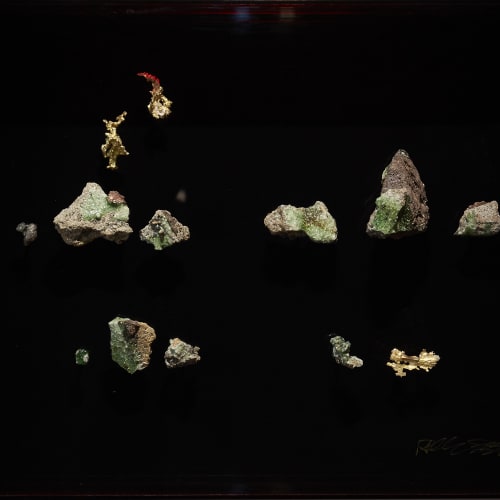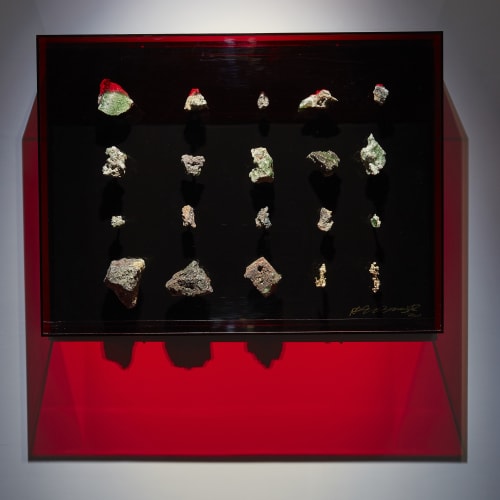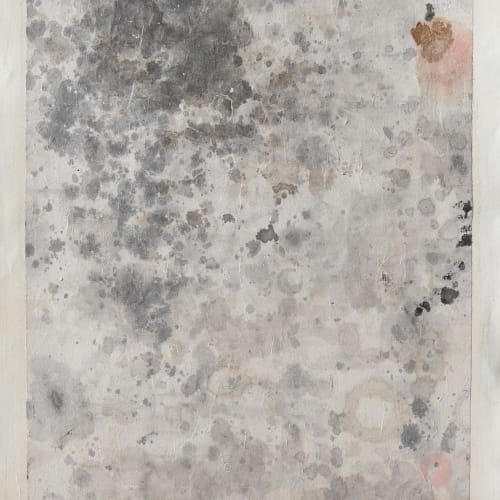Mind Set Art Center is honored to present the works of Chinese artist Shi Jinsong at Hong Kong Art Basel 2019. From March 29th to 31st, the grand art fair will be held at Hong Kong Convention & Exhibition Centre. The preview will start from March 27th. You are cordially invited to this event.
The title “All That Is Solid Melts into Air” comes from a quotation in Karl Marx's The Communist Manifesto. As the curator Liao Liao pointed out, leaving aside the context of the source text, this line is likely the most fitting footnote for today's great era. He wrote, “With the internet, globalization, consumerism, and artificial intelligence sweeping across the globe, the power structure has radically changed—the system of knowledge, the mode of communication, and the way of life. The solids we believe today, let it be faith, power, culture, or even the institution, will one by one vanish into thin air. This change is not the result of a bloodshed revolution, but an imperceptible yet unstoppable engulfment that takes us over…Shi Jinsong experiences the vicissitudes of time from an ‘individual identity’, in which he constantly attempts to analyze, digest and rebuild the mode of production, power structure and knowledge field of the new era. Shi's unique creative thinking and methodology completes a form of individual's publicness. By means of ‘violent destruction’ such as burning, hitting, tearing, grinding, and chemical reactions, Shi makes the appearance and illusion of objects disappear to reveal the inner truth.”
The exhibited Hua Shan Project refers to the famous Hua Shan, a cultural significant mountain in China. The artist “falsified" many worn-out articles of daily use, creating traces of wear and tear. In this era of constant melting into air, Hua Shan Project is a reminder of what we are facing—how power determines significance and how it affects people's behavior and life. Probing into the transition of civilization, 1200°C was created with incineration and carbonization, which are common art practices used by Shi. The piece was created by exposing objects to 1200 degrees Celsius—the temperature that gave birth to the Bronze Age. The significance of the objects in their original cultural systems are thus dissolved, implying destruction, cleansing and reconstruction. A Quick Change points to the quest of "existence." Shi placed fruits and trinkets in an electrolytic copper solution, and when the objects dissolved, they left behind copper shells. The work presents the edge of the critical point in between material disappearance and rebirth. On the other hand, the artist makes the physical objects disappear and leaves behind their hollowed shell, urging us to look at the relations between the inner core and the surface, the physical entity and the masked facade in today's virtual space.
Under the same concept of deconstruction, the exhibited triptych Jingbian Figure and Qian Chuang Garden also reconstructed the tradition. Based on the reference of Bhaisajyaguru Jingbian Painting found in Dunhuang, Shi created imprints of everyday life objects by dipping them in tea that substituted ink and leaving marks on calligraphy paper. The image of buddha subtly appeared in the appreciation of traditional ink painting, rendering a solemn atmosphere of religious painting via the deconstructive approach. As for Qian Chuang Garden, the reconstruction of the torn-down studio, it also practiced the method of deconstruction and destruction to break the outer illusion and expose the inner essence of truth. From the artist's perspective, this is the only way to face and dissect this era of great change and save oneself from becoming a part that melts into air.







